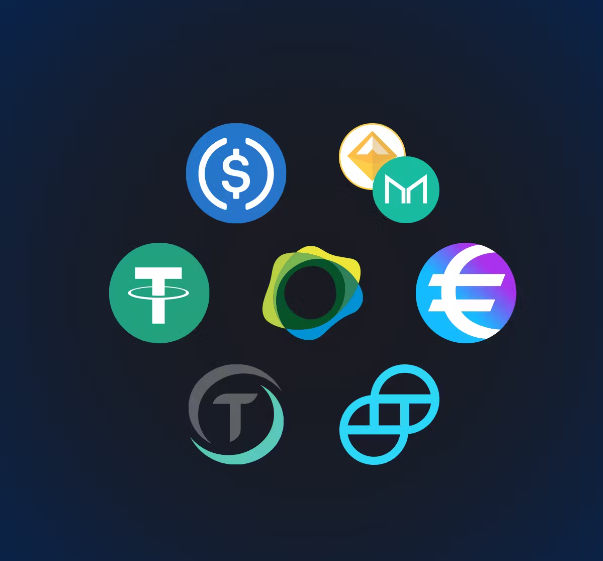bbc.towzdog.com – What Are Stablecoins: A Complete Guide to Digital Assets Pegged to Stable Value Stablecoins have emerged as an essential part of the cryptocurrency world, offering a bridge between volatile digital assets and more stable traditional currencies. With the ongoing growth of the cryptocurrency market, stablecoins are increasingly popular among users who seek the benefits of blockchain technology without the high volatility associated with assets like Bitcoin or Ethereum.
This article explains what stablecoins are, how they work, the different types available, and why they are essential in the digital finance landscape. Whether you’re new to cryptocurrencies or looking to understand stablecoins in-depth, this guide will provide a clear and comprehensive overview.
What Are Stablecoins?
In simple terms, stablecoins are digital assets designed to maintain a stable value by being pegged to traditional assets, such as fiat currencies (like the U.S. Dollar or Euro), commodities (like gold), or other assets. Unlike other cryptocurrencies that can have extreme price fluctuations, stablecoins are designed to offer price stability, making them attractive to users who want to avoid the high volatility typical of many digital assets.
Key Features of Stablecoins
The main features that set stablecoins apart from other cryptocurrencies include:
- Price Stability: Stablecoins are typically pegged to assets like fiat currencies, providing a predictable price.
- Accessibility: They offer the benefits of digital assets—like fast transactions and low fees—without the high price volatility.
- Versatility: Stablecoins are used in various sectors, from decentralized finance (DeFi) to traditional commerce, enabling both financial applications and day-to-day transactions.
Types of Stablecoins: Fiat-Collateralized, Crypto-Collateralized, and Algorithmic
Not all stablecoins are the same. There are different types based on their underlying collateral and the mechanisms that maintain their value. Here are the main categories:
1. Fiat-Collateralized Stablecoins
Fiat-collateralized stablecoins are backed by traditional fiat currencies like the U.S. dollar, euro, or yen. Each fiat-collateralized stablecoin is typically backed on a one-to-one basis, meaning that each coin is supported by an equivalent amount of fiat currency held in reserve.
Examples of Fiat-Collateralized Stablecoins
- Tether (USDT): The first and one of the most widely used stablecoins, USDT is pegged to the U.S. dollar and backed by cash reserves.
- USD Coin (USDC): Another popular stablecoin, USDC is managed by a consortium called Centre, which includes Coinbase and Circle, with reserves audited regularly to ensure transparency.
- TrueUSD (TUSD): This stablecoin is backed by the U.S. dollar and offers users transparency by providing monthly audit reports.
Fiat-backed stablecoins are the most commonly used type of stablecoin because they offer high stability and are easy to understand. However, they require a high level of trust in the organization managing the reserves.
2. Crypto-Collateralized Stablecoins
Crypto-collateralized stablecoins are backed by other cryptocurrencies, such as Ethereum or Bitcoin. To handle the volatility of cryptocurrencies, these stablecoins are often over-collateralized, meaning that they are backed by more crypto than their actual value to protect against price fluctuations.
Example: DAI Stablecoin
One of the most popular crypto-collateralized stablecoins is DAI, managed by the MakerDAO platform. DAI is pegged to the U.S. dollar and backed by Ethereum and other crypto assets. Unlike fiat-backed stablecoins, DAI is decentralized, meaning it operates through smart contracts rather than relying on a central authority.
3. Algorithmic Stablecoins
Algorithmic stablecoins are not backed by any traditional or digital assets. Instead, they rely on smart contracts and algorithms to manage the supply and demand of the stablecoin to keep its price stable. When the stablecoin price rises above the target (usually $1), new coins are minted to increase supply and bring the price down. When the price falls below the target, the supply is reduced.
Example: TerraUSD (UST)
TerraUSD (UST) is a notable example of an algorithmic stablecoin that was pegged to the U.S. dollar. However, the Terra project experienced significant volatility in 2022, leading to a major crash that affected UST’s price stability and created concerns about the reliability of algorithmic stablecoins.
Algorithmic stablecoins are innovative but can be more volatile and less predictable than fiat-backed or crypto-collateralized stablecoins.
Why Stablecoins Matter in the Cryptocurrency Ecosystem
Stablecoins play a crucial role in the cryptocurrency ecosystem, as they provide a stable, reliable medium of exchange that combines the benefits of digital assets with the stability of fiat currencies. Here’s why stablecoins are important:
- Facilitating Transactions: Stablecoins enable seamless transactions between cryptocurrencies and fiat currencies. Users can move their funds into stablecoins to avoid volatility without leaving the crypto ecosystem.
- DeFi Applications: In the decentralized finance (DeFi) sector, stablecoins are essential for lending, borrowing, and yield farming. They provide a stable base asset, reducing risks associated with price volatility.
- International Remittances: Stablecoins offer a fast, low-cost solution for cross-border payments, particularly in regions with limited access to traditional banking.
- Hedge Against Volatility: Traders often use stablecoins as a “safe haven” asset during market downturns, moving funds from volatile cryptocurrencies to stablecoins.
The Role of Stablecoins in Decentralized Finance
Stablecoins are particularly popular in DeFi (decentralized finance), where they are used in lending, borrowing, and staking protocols. In DeFi, stablecoins allow users to interact with decentralized applications (dApps) without the risk of losing value due to price fluctuations. Platforms like Aave, Compound, and MakerDAO rely heavily on stablecoins like USDC and DAI for liquidity and loan services.
Risks and Concerns Associated with Stablecoins
While stablecoins offer many benefits, they are not without risks. Users and investors should be aware of the potential drawbacks associated with stablecoins:
1. Centralization Risks in Fiat-Collateralized Stablecoins
Many fiat-backed stablecoins rely on a centralized entity to manage reserves, which can create a centralization risk. Users must trust that the issuing company holds sufficient reserves to back their stablecoins fully. Regulatory bodies are beginning to scrutinize stablecoins more closely, with some governments proposing new regulations on stablecoin issuance.
2. Volatility in Algorithmic Stablecoins
Algorithmic stablecoins have shown potential but can be prone to instability, as demonstrated by the TerraUSD (UST) crash in 2022. These stablecoins depend on market confidence and may face severe de-pegging issues if demand falls or if there are disruptions in their algorithmic mechanisms.
3. Regulatory Uncertainty
Governments worldwide are looking into stablecoin regulation, with concerns over consumer protection, financial stability, and the potential for stablecoins to disrupt traditional financial systems. In the U.S., the Federal Reserve and other regulatory bodies are exploring ways to regulate stablecoins to ensure that issuers maintain transparency and adequate reserves.
Future of Stablecoins: What Lies Ahead?
The future of stablecoins is promising, with potential applications expanding into areas such as central bank digital currencies (CBDCs) and further integration in DeFi. However, the role of regulation will be significant in shaping the stablecoin landscape.
Key Trends to Watch
- Increased Adoption in Commerce: Stablecoins are becoming more accepted as a medium of exchange in e-commerce and retail, with platforms like PayPal supporting stablecoins like USDC.
- Central Bank Digital Currencies (CBDCs): Some governments are exploring CBDCs, which could offer similar stability to stablecoins but with government backing.
- New Regulatory Frameworks: Countries like the U.S., Japan, and the EU are actively working on regulatory frameworks for stablecoins, which may affect how these assets are used in the future.
For further details on stablecoins and their potential impact, check out CoinDesk’s guide on stablecoins, which provides an in-depth overview of various stablecoins and their role in the crypto ecosystem.




